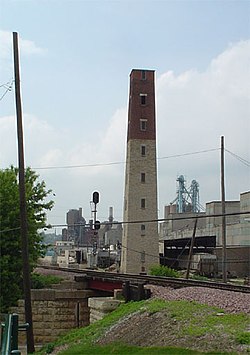
A shot tower is a tower designed for the production of small-diameter shot balls by free fall of molten lead, which is then caught in a water basin. The shot is mainly used for projectiles in shotguns, and for ballast, radiation shielding, and other applications for which small lead balls are useful.












